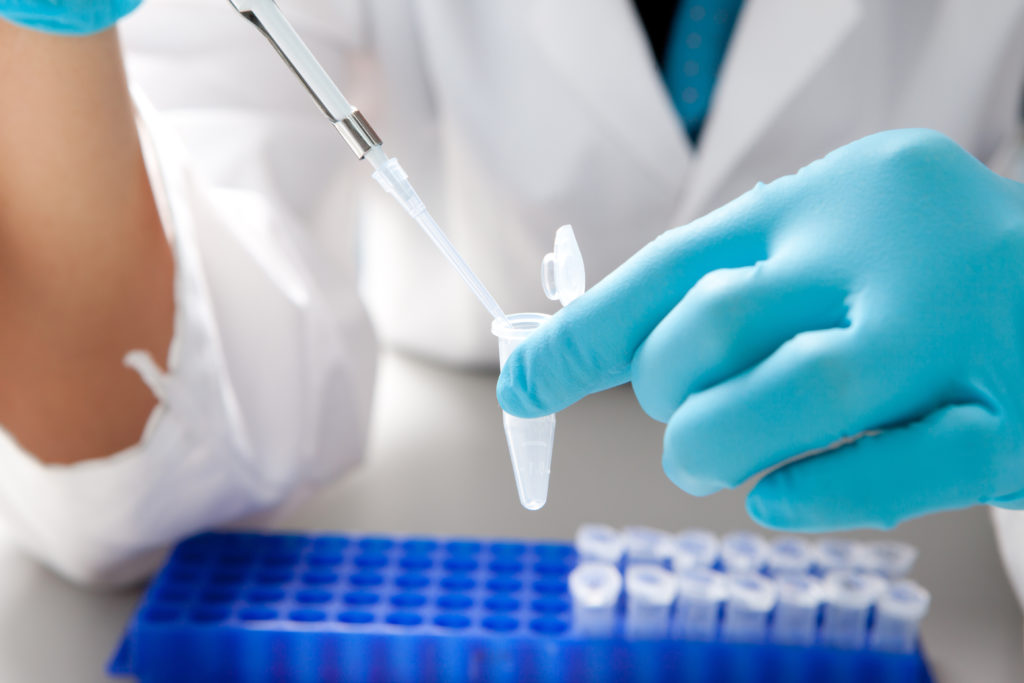Kidney and Urinary Tract Protein Demonstrates Antimicrobial Activity
Kidney and Urinary Tract Protein Demonstrates Antimicrobial Activity https://pediatricsnationwide.org/wp-content/uploads/2021/03/AdobeStock_42423701-1024x683.jpg 1024 683 Lauren Dembeck Lauren Dembeck https://pediatricsnationwide.org/wp-content/uploads/2021/03/Dembeck_headshot.gif- October 06, 2021
- Lauren Dembeck

A little-studied peptide found in the urinary tract is a potential biomarker for urinary tract infection risk and could be developed into a novel therapeutic against drug-resistant bacteria.
Researchers at Nationwide Children’s Hospital have demonstrated that an understudied protein expressed in the human kidney and bladder kills the bacteria that cause urinary tract infections (UTI). The findings were published in the American Journal of Physiology-Renal Physiology.
“The bacteria that cause UTI are increasingly becoming resistant to antibiotics, driving the need to discover novel therapeutic approaches,” says co-first author and research associate Kristin Bender of the Nephrology and Urology Research Affinity Group (NURAG) and the Abigail Wexner Research Institute (AWRI) at Nationwide Children’s.
“UTI doesn’t receive a lot of attention in the press, but it has a high prevalence and places a substantial burden on both patients and the health care system every year,” adds co-first author and research scientist Laura Schwartz, PhD, who is also a member of NURAG and AWRI.
Humans produce a large family of ribonuclease (RNase) A proteins, many of which have antimicrobial activity. For the study, the team sought to evaluate the antimicrobial function and tissue expression pattern of the least studied of this family, RNase 4.
In a series of in vitro experiments, they showed that RNase 4 has powerful antibacterial activity against uropathogenic Escherichia coli (UPEC) as well as multidrug-resistant UPEC, suggesting that it may be a promising candidate to develop as a novel therapeutic.
While the exact mechanism of action needs further study, senior study author John David Spencer, MD, chief of the Division of Nephrology and Hypertension at Nationwide Children’s explains, “This antimicrobial protein has a series of positively charged amino acids that are attracted to the negatively charged proteins of the bacterium. It basically punches holes in the bacterial membrane, leading to cell death.”
Using human samples, the team found that RNase 4 is broadly expressed within the kidney cells that are targeted by the UTI-causing pathogens as well as within the bladder, and urinary RNase 4 concentrations were two-fold lower in samples from females with a history of UTI compared with those from females with no history of UTI, suggesting that RNase 4 could potentially be developed as a biomarker to identify individuals most at risk for the establishment or recurrence of UTI.
“This was the first time that urinary levels of RNase 4 in humans were found to contribute to the immune defenses against UTI, highlighting the multifaceted nature of the immune system,” says Bender.
Prospective studies are needed to determine if the relationship between RNase 4 levels and UTI risk is causal. “We are now studying RNase 4 levels in populations with higher risk of UTI, such as individuals with diabetes, patients requiring catheterization, and pregnant women,” says Dr. Schwartz.
The team’s long-term goal is to develop RNases as novel therapeutics to replace or augment traditional antibiotics.
This article appears in the 2021 Fall/Winter print issue. Download the full issue.
Reference:
Bender K, Schwartz LL, Cohen A, Vasquez CM, Murtha MJ, Eichler T, Thomas JP, Jackson A, Spencer JD. Expression and function of human ribonuclease 4 in the kidney and urinary tract. American Journal of Physiology Renal Physiology. 2021 May 1;320(5):F972-F983.
Image credit: Adobe Stock
About the author
Lauren Dembeck, PhD, is a freelance science and medical writer based in New York City. She completed her BS in biology and BA in foreign languages at West Virginia University. Dr. Dembeck studied the genetic basis of natural variation in complex traits for her doctorate in genetics at North Carolina State University. She then conducted postdoctoral research on the formation and regulation of neuronal circuits at the Okinawa Institute of Science and Technology in Japan.
-
Lauren Dembeckhttps://pediatricsnationwide.org/author/lauren-dembeck/
-
Lauren Dembeckhttps://pediatricsnationwide.org/author/lauren-dembeck/
-
Lauren Dembeckhttps://pediatricsnationwide.org/author/lauren-dembeck/
-
Lauren Dembeckhttps://pediatricsnationwide.org/author/lauren-dembeck/January 29, 2019







